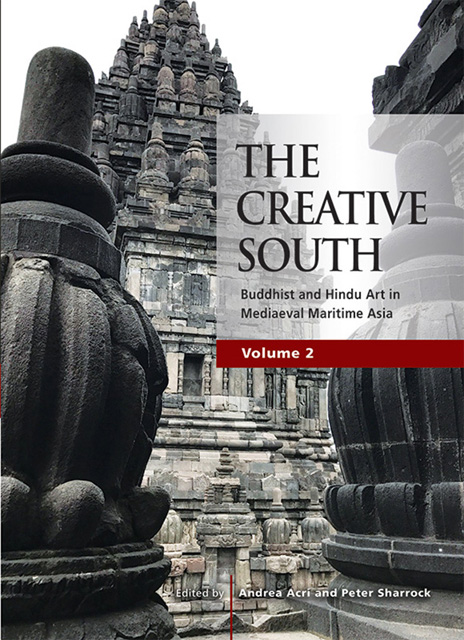Chapter 3 - Circulation of Buddhist Maṇḍalas in Maritime Asia: Epigraphic and Iconographic Evidence from Odisha and Java (8th–11th Century)
Published online by Cambridge University Press: 30 June 2023
Summary
INTRODUCTION
The eastward spread of Esoteric Buddhist Tantra, of which architectural and sculptural maṇḍalas were a constitutive part, from the Indian subcontinent to other regions of Maritime Asia was a defining feature of the Indic Middle Ages. Starting from the 7th century CE, Esoteric Buddhism began to develop iconographic programmes based on maṇḍalic themes in which the Pañcatathāgata system, with Vairocana or Akṣobhya at the centre, as well as bodhisattvas and other divinities, were arranged in particular alignments. This chapter explores the development of maṇḍalas based on Caryā- and Yoga-tantras in the architectural and iconographic programmes of Buddhist sites in Ratnagiri, Udayagiri, and Lalitagiri, situated in what is now the eastern littoral state of Odisha in India. In the first part, it argues that Odisha emerged as an early centre of Esoteric Buddhism, presenting epigraphic, sculptural, and architectural evidence of maṇḍalas that Buddhist monks transmitted to Southeast and East Asia. In the second part, it highlights similarities between the Odishan architectural and art historical remains and analogous monuments and objects from the Buddhist sites of Central Java, which were also based on the Caryā- and Yoga-tantras.
PART I:
ODISHA AS AN EARLY CENTRE OF ESOTERIC BUDDHISM
The Identification of Odisha as Uḍḍiyāna/ Oḍḍiyāna
Before starting my exploration of Esoteric Buddhism in Maritime Asia with special reference to Odisha, a discussion of the issue of the identification of Uḍḍiyāna/Oḍḍiyāna is in order. Uḍḍiyāna/ Oḍḍiyāna, which the Tibetan accounts regard as an important centre of Esoteric Buddhism, has variously been associated with the Swat Valley in Northwestern India or Southeastern India (Odisha, Tamil Nadu). The Gaṇeśa image inscription found in Gadrez (near Swat) and its reading by scholars, such as Ronald Davidson (2002: 209), led many to assert in unequivocal terms that Oḍḍiyāna is the Swat valley, and Sanderson (2007: 265–67) has gathered further evidence from Sanskrit texts supporting this identification. However, as argued by Sahu (1958: 147), the words Oḍa, Oḍra, Uḍra, Oḍiviśa and Oḍiyāna are all used as variants of Uḍḍiyāna in both Tibetan and Sanskrit texts: for instance, in the Sādhanamālā (12th century CE), Uḍḍiyāna is also spelled as Oḍrayāna (Odisha), while in the Kālikā Purāṇa (c. 11th–12th century) it is spelled either Uḍḍiyāna or Oḍra (van Kooij 1972: 170–171).
- Type
- Chapter
- Information
- The Creative SouthBuddhist and Hindu Art in Mediaeval Maritime Asia, pp. 27 - 52Publisher: ISEAS–Yusof Ishak InstitutePrint publication year: 2022



